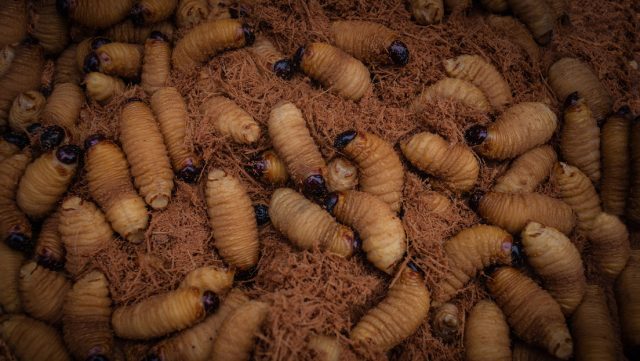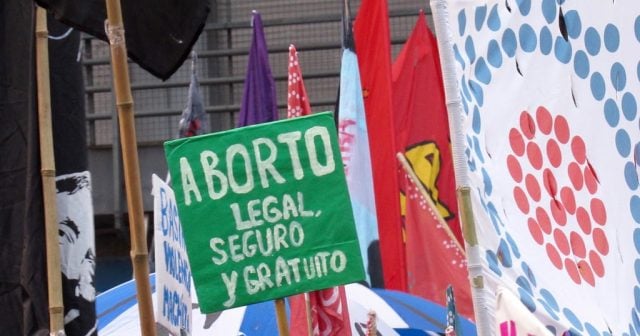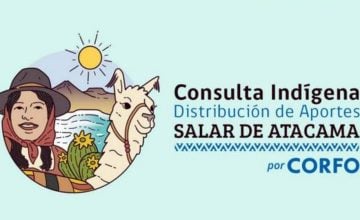Is it possible that a larva is a ‘superfood’ and, at the same time, it ruins crops and causes economic losses? The two answers are correct and serve to talk about an insect that emerged from the incalculable biodiversity in the Amazon rainforest, which haute cuisine includes more and more in its menus.
The larva of the beetle Rhynchophorus palmarum is known in the indigenous communities of the Colombian department of Amazonas, in the extreme south of the country, as mojojoy. It is also called cucarrón, cigarrón, gorgojo (weevil), gorgojo de palma (palm weevil), casanga, picudo, picudo negro, picudo del cocotero, according to the Venezuelan researcher and historian Rafael Cartay on the page Del Amazonas.
The larva has other names in the South American Amazon. In Peru it is known as suri; in Ecuador as chontacuro, mukint or mukindi; in Colombia it is also called chiza and in Venezuela it is called gusano de palma (palm worm), Cartay writes.
Beyond their names, which depend on where they are found, these insects have been ancestrally used by these Amazonian communities as part of their diet, which according to studies, is rich in proteins and fats, and for their medicinal qualities, explains a report by Nathali Gómez for RT.
Insects and food security
The natives collect these larvae mainly from the seje and moriche palms, and eat them raw, boiled or roasted. The Food and Agriculture Organization of the United Nations (FAO) defines entomophagy as the consumption of insects by humans and affirms that it contributes to food security and to combat hunger in the world.
The international entity proposes that «one of the many ways to address food security» is through the breeding of insects due to their rapid reproduction and high growth rates. «They are nutritious, as they contain high levels of protein, fat and minerals», explains the FAO.
As an alternative, given the damage they can cause to crops, FAO says that they can be raised using various waste deposits, especially of waste food.
In the Amazon, they are consumed by the indigenous groups Tikuna, Yagua and Bora and in Colombia at least 547 species have been identified.
What are the benefits of this larva for our health?
Although the health benefits depend on the nutritional content of the insects, depending on which stage of their life they are at, habitat and diet, the proteins and nutrients are of «high quality», when compared to those of meat and fish, according to FAO.
In addition, they are important food supplements for malnourished children because they contain high levels of fatty acids and have a reduced risk of disease transmission to humans.
Among its components, they also have fiber and micronutrients such as copper, iron, magnesium, phosphorus, manganese, selenium and zinc.
In his thesis on the nutritional characterization of mojojoy in the department of Santander, the Colombian Juan Sebastián Rangel found that the larva has 34.69% protein; 4.85% fiber; 17.3% fat; 0.11 mg of magnesium, 0.8 mg of potassium and 0.94 mg of phosphorus.
The gourmet mojojoy
When it comes to tracking this larva, beyond the Amazon jungle where its consumption also attracts tourists, it can be reached at the table of a haute cuisine restaurant in the Colombian capital.
It is common to see images and videos on Instagram of those who dare to try this ‘superfood’ as part of their journey through unknown areas in the depths of Colombia, both in street food stalls and in specialized restaurants.
In one of the clips, a man eats one of these worms alive, but not before hesitating a bit, because it moves between his fingers. Those who recommend it warn that the head should be discarded. After he gobbles it up, the young man says it tasted like coconut.
In the social networks, there is also a lot of information of restaurants that offer this dish with fine presentations and as an exotic food that is found both in Leticia, capital of Amazonas, and in Bogotá.
The larva
Despite all their nutritional properties for humans, farmers exterminate those also known as chizas, because in some regions they are considered a pest that causes crop losses of both palms and other plant species.
Mojojoy affects palm crops after the beetles lay their eggs inside the trunks of the palms and the young feed on them until they are rendered useless.
This underground larvae kills plant roots and can damage an entire crop of vegetables, tubers, and greens. Their presence implies an increase in production costs because pesticides are used to exterminate them.
The female lays her eggs, even at depths between 20 and 40 centimeters, with an incubation period of one month. The larvae measure 5 mm at birth and go through three stages in eight months until they are white, have a dark brown head, a C-shaped body and three pairs of legs, states the Phytosanitary Cultivation Manual of the Colombian Ministry of Agriculture and Rural Development.
In addition to palms, they affect a wide variety of crops such as potatoes, corn, beans, peas, spinach, lettuce, tree tomato, blackberry, onion, cabbage, both in low soil and above 1,000 meters above the sea level.
Among the ways, used by producers, to eradicate them are sun traps, because adults are attracted to light, fungi, grazing and pesticides.
Is the solution extermination?
The larvae are important to the indigenous people of the Amazon region for their nutritional value, which guarantees their food security, and their medicinal properties. For this reason, the palms are planted so that the larvae can develop in them, despite the fact that they later die.
Some species of beetles are in danger of extinction due to their eradication, according to Gabriel Colorado Zuluaga, coordinator of the research group on Ecology and Conservation of Wild Fauna and Flora of the National University of Colombia in the Amazon to the Ibero-American Agency for the Diffusion of Science and Technology.
As a different option, researchers from that university have studied ways to raise the larvae without affecting the plants in a sustainable way for the families that eat this ‘superfood’. In 2016, they tested mojojoy breeding in different substrates such as sawdust from the aguaje palm with good results.











